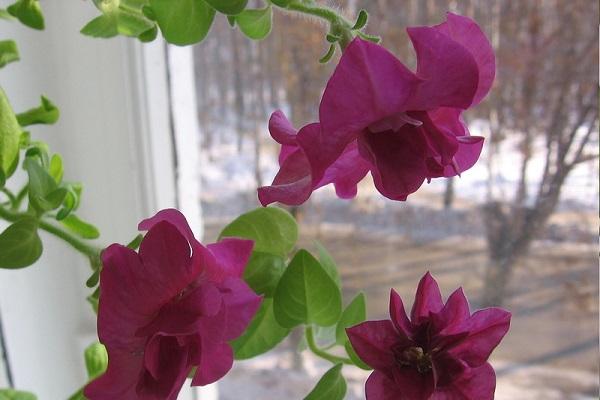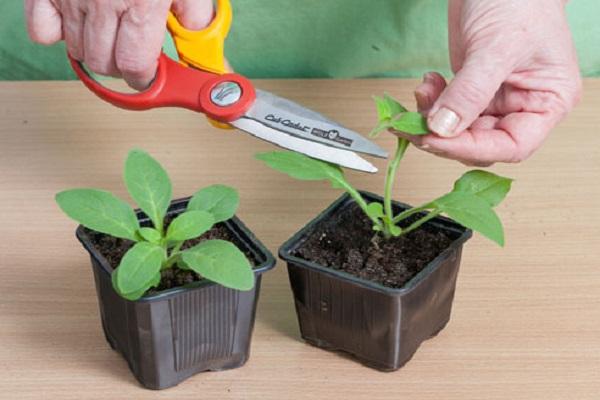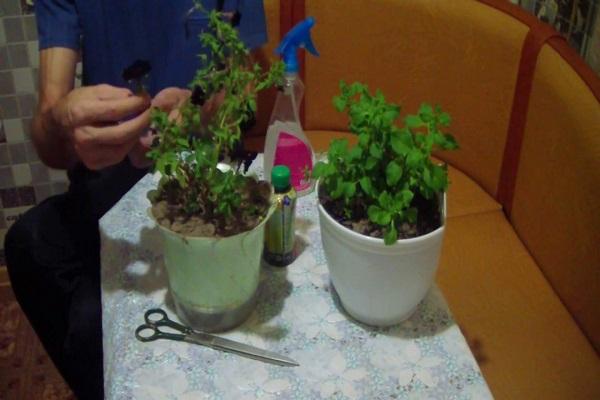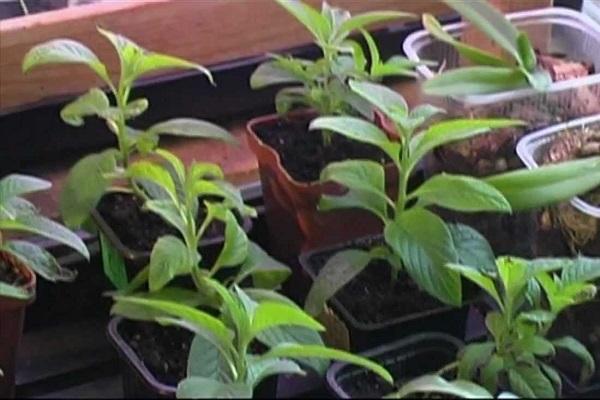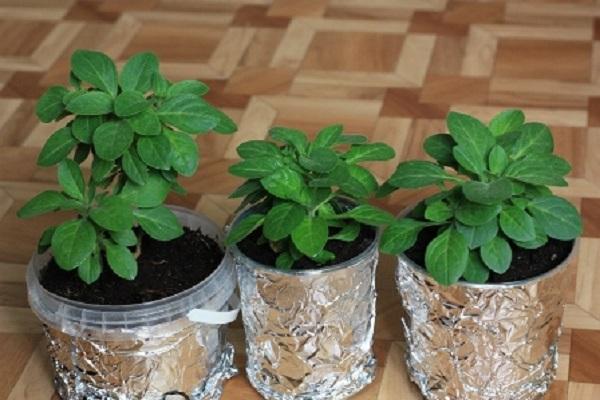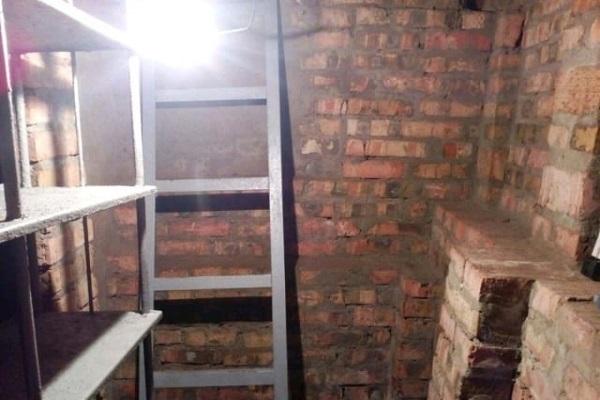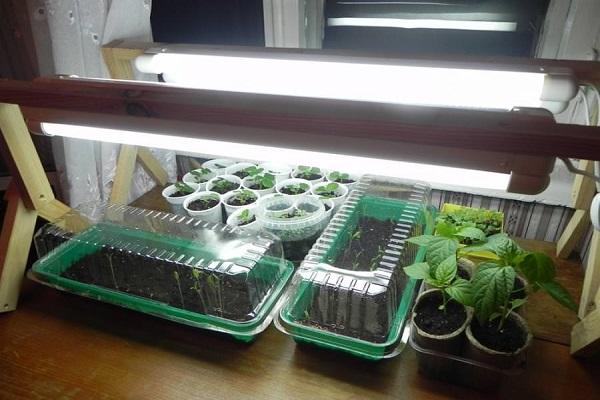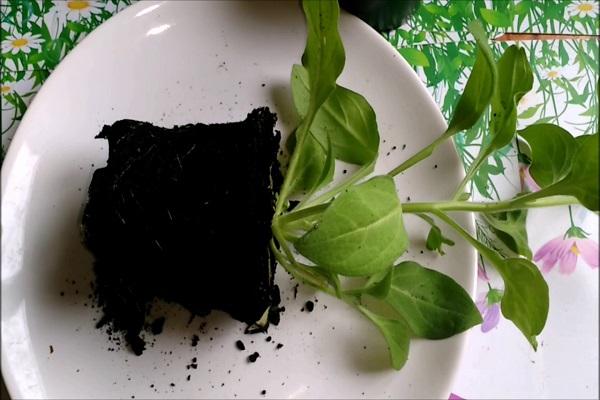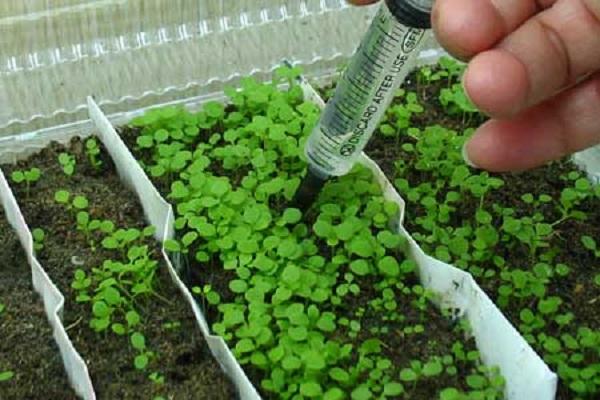Petunias are one of the most popular flowers among gardeners. They are bred for gardens, grown on balconies, and they are also popular as potted crops. Tropical countries are considered the birthplaces of petunias, so how to preserve petunias until spring in a temperate climate is a question that worries many gardeners.
- Features of growth in winter
- How to prune petunia for the winter
- What are the benefits of winter storage?
- Ways to Preserve Flowers
- By transplantation
- Using cuttings
- Places where you can store a flower
- In the apartment
- In the cellar
- Caring for petunia in winter
- Preparing petunias for planting in open ground in spring
Features of growth in winter
Petunias are not common as perennials.In summer cottages they are often grown as annual flowers. In the spring, the seeds are sown, and when autumn comes, the faded flower is uprooted and thrown away or tried to be preserved for the winter.
The disadvantage of growing petunias in the country is the difficulty of preserving flowers for the winter. They do not like the cold, they need constant lighting and warm water for irrigation. There are many varieties of petunias on the floriculture market. Many species and varieties are propagated using seeds.
Some species reproduce exclusively by vegetative means. Advantages vegetative propagation of petunia:
- obtaining young plants throughout the year;
- the ability to preserve the variety as an indoor perennial.
How to prune petunia for the winter
The purpose of pruning petunia in the fall is to preserve the variety for spring. Faded bushes are pruned in September and early October:
- the length of the stems for wintering in open ground should be no more than 15 centimeters for bush forms;
- in hanging forms, 50 percent of the stem is left.
To preserve petunias in winter, after planting in a pot, the stems are cut off by 90 percent. In this case, the cut cuttings are used for further breeding of the variety.
What are the benefits of winter storage?
Winter storage of petunias differs from the annual spring sowing of seedlings or seeds in several factors:
- perennial plants overwintering indoors are capable of flowering earlier;
- indoor perennial plants are suitable for quickly propagating seedlings (cuttings are used for this, which take root with almost one hundred percent success);
- Winter storage is good because it allows you to preserve varieties that propagate vegetatively.
Ways to Preserve Flowers
To preserve petunia until spring, several methods are used. You can put the adult plant in a warm place or use the cutting method.
By transplantation
For replanting, mother plants are used, that is, an adult petunia bush, which is left until spring, followed by cuttings. To do this, the bush is transplanted into a potted container at the end of September or beginning of October. At the same time, it is taken into account that the plantings must have time to take root before the onset of cold weather.
An important condition for transplanting a queen cell into a pot is the selection of a container. The pot is selected taking into account the size of the adult plant and the volume of its root system.
Information! Petunias are characterized by the growth of lateral root appendages, so small containers are not suitable for replanting.
After transplantation, dry or damaged parts are removed from the mother plant, leaving only 10 centimeters from the entire stem. After this, the mother liquor must be transferred to where it is dry and cool.
Using cuttings
Gardeners call cuttings, which do not depend on the time of year, an advantage of petunias. Experts recommend carrying out a planned cutting procedure in the fall, at which time the flower is completely ready for propagation:
Cuttings are carried out following the sequence of actions:
- Cut off the upper branches, on which there are four or six leaves.
- The flower is cut from the top.
- Then the bottom sheets are cut off.
- The cut of the stem is released into a root former or root growth stimulator (a solution of manganese or crushed activated carbon is used for the same purpose - such a procedure disinfects the plant and promotes its rapid development).
- Then the cuttings are placed in a soil mixture for which different soils are used.
- The plants are watered and the soil is lightly compacted.
- Cover with a transparent lid or film.
Creating a greenhouse effect with the help of additional shelter helps the shoots to take root faster due to constant moisture.
Places where you can store a flower
It is recommended to store the mother plant and planting cuttings under different conditions. An adult plant does not need additional actions; cuttings need to be provided with the effect of greenhouse conditions for the first time before rooting.
In the apartment
The queen cell must be brought home in early autumn; the pot will remain perfectly preserved until next year in a cool room. At home, use a pantry with artificial lighting. The temperature for storing queen liquor should not exceed +22 degrees. Cuttings are stored at temperatures from +10 to +20 degrees. To speed up the emergence of seedlings, it is necessary to provide additional light to the petunias.
In the cellar
For storage in the basement, the room is prepared in such a way as to ensure certain conditions:
- maintaining a temperature of at least +10 degrees;
- humidity level – not lower than 65 percent;
- additional artificial lighting.
During the frost season, it is better to move petunia from the cellar to a warm place, because a drop in temperature can kill an adult plant.
Caring for petunia in winter
The rules for caring for petunias do not differ from the rules for caring for other indoor flowers. Control over watering and fertilizing is the key to plant growth and development. Flowers are watered with settled water at room temperature. For watering, choose one of several options:
- Watering at the root. It is necessary so as not to damage the delicate buds.
- Pallet watering.This type of watering is usually used for seedlings or small petunias: containers with flowers are placed on a wide, low tray filled with water. To obtain the necessary moisture, the pot must be equipped with drainage holes.
- Wick watering. This method is often used for indoor flowering species. When planting, a twine or rope made of synthetic material is placed inside the soil, then the plant is provided with a free position, and the wick has access to water at room temperature.
Throughout the winter, after root watering, it is recommended to loosen the soil to prevent the formation of a crust.
Petunias are not suitable for such a procedure as a hygienic shower. It can damage the velvety structure of the leaves and is also contraindicated for buds. It is carried out if it is necessary for the treatment of the plant, its processing and disinfection.
Information! When weeds appear, they are removed immediately so that they do not deprive the petunia of nutrients coming from the soil.
For the proper development of petunia in winter, it is necessary to carry out several feedings:
- one-time feeding with nitrogen-containing fertilizers;
- one-time potassium supplementation.
The appearance of aphids, spider mites or infection with diseases such as black leg or gray rot require special care. To do this, it is recommended to treat the plants with special preparations, avoiding treating the buds.
Advice! If damaged, drying leaves appear, they must be removed in a timely manner.
Preparing petunias for planting in open ground in spring
Planting petunia seedlings in open soil depends on the climatic conditions of the region.Gardeners recommend choosing a period of time when the top layer of the earth is sufficiently warm and there are no sub-zero temperatures at night.
The soil for seedlings is prepared using garden soil with the addition of vermiculite. Before planting, it is loosened for additional oxygen saturation. Planting material is prepared as follows:
- the container with seedlings is spilled generously;
- carefully pull out the plants along with a lump of earth and an intact root system, trying not to damage them;
- the cutting is placed 15 centimeters deep into the prepared hole;
- the flower is placed vertically, sprinkled with earth and compacted;
- spilled with warm water to reduce the level of stress for the plant.
Leave a distance of up to 15 centimeters between plantings. This is necessary so that the root systems of the sprouts do not interfere with each other’s development.
It is recommended to cover the ground around the flower with peat or grass that has been recently mowed. This helps to avoid infections, as well as premature drying out, and maintains soil moisture.

